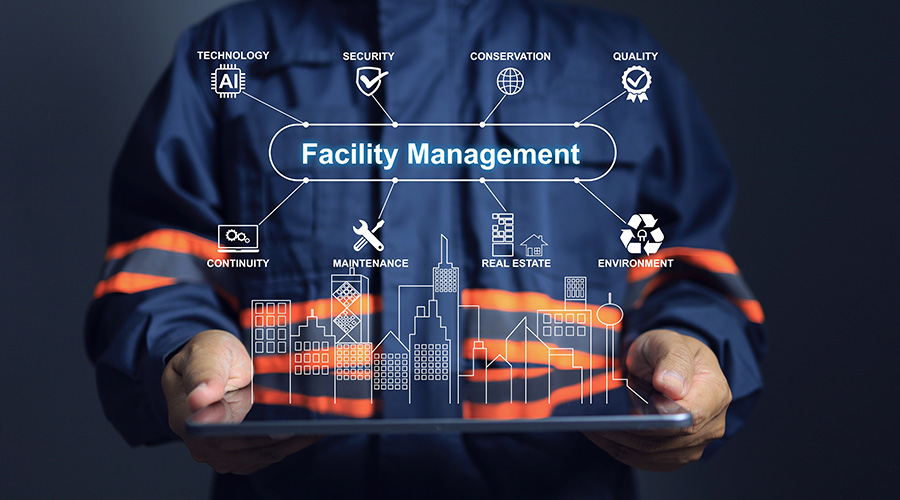Alternative Thinking
For eco-conscious data center owners, a variety of renewable energy sources can supplement grid power
This won’t come as a surprise to facility executives: Data centers consume a tremendous amount of energy. In fact, data centers accounted for 1.5 percent of all energy used in the United States in 2006, and this figure is expected to continue to grow. According to a recent study by Lawrence Berkeley National Laboratory, the rapid increase in server use has led to a significant spike in data center energy consumption.
The cost of energy generated by fossil fuels is high — both in dollars and in the associated environmental impacts. As a result, businesses are being pressured by stakeholders to reduce their energy use and carbon emissions. On the federal, state and local levels, lawmakers have instituted programs and economic incentives to encourage alternative energy use. The U.S. Department of Energy also encourages alternative energy by funding research.
Many utility companies have started offering rebates to customers that use alternative energy sources to produce power. Businesses unable to produce their own alternative power can purchase it. In some states, it is possible to purchase power produced from environmentally responsible sources, such as photovoltaic (solar) parks, wind farms, hydropower or geothermal plants. The purchase price is based on kilowatt-hour usage by the end user. Obviously there isn’t a way to guarantee that each individual watt produced is sent to a particular user. Rather the green power supplier will send to the grid the amount of power the end user bought.
Renewable Energy Certificates (RECs) can provide the owner with a direct financial benefit. Currently, several states have passed state Renewable Portfolio Standard (RPS) laws allowing the creation and the selling of RECs. Many other states are considering RPS laws.
RECs allow owners to implement either energy efficiency projects or projects that reduce carbon dioxide emissions and sell the credits on the open market. The credits for energy efficiency projects range from $20 to $40 per megawatt-hour (MWH) and are paid to the owner each year over the life of the installed equipment. For example, a 1 MW cogeneration project could provide the owner with a $175,000 to $325,000 per year return. However, few data centers have the resources or desire to get into the business of cogeneration, nor are they likely to produce enough power using other qualifying technologies to sell it on the open market. Other qualifying technologies include energy-efficient lighting, chillers, boilers, and sustainable alternative energy projects, such as photovoltaics and fuel cells.
On the other hand, purchasing RECs pays somebody else’s capital cost to generate sustainable energy on one’s behalf. This is an ideal option for companies that are tenants in a high-rise building, those that do not have the land or roof space required for renewable infrastructure, or those that intend to relocate.
In fact, for owners without the space, capital, or long-term commitment to on-site power generation — including adequate trained staff and funding for ongoing operations and maintenance — purchasing green power from an off-site generation facility is the most practical alternative. The power is typically transmitted over the standard utility grid, which eliminates the necessity for additional infrastructure. However, the end-user is still subject to the grid’s power quality or outages and its inherent level of reliability. Critical facilities still require an emergency diesel generator, no matter whether they use standard fossil fuel-generated power or green power from a utility.
Grid Dependent?
For owners with the resources and commitment to develop on-site power generation, it is possible to substantially reduce dependence on the grid.
Distributed generation refers to the use of small electric generators, which often consist of photovoltaic cells or wind turbines and are most often located near the load and connected via a net meter to the grid. These systems benefit the owner by reducing peak demand, often the most costly time of day to consume energy, in addition to reducing overall energy use. They can be used to supplement electricity purchased from a utility in terms of availability and power quality.
On-site generation infrastructure requirements vary with the type of renewable energy system. One thing is certain, however, and that is the need for an initial capital investment.
All renewable energy sources require a complex system to deliver power in a usable form. These systems include a generation point — a wind turbine or photovoltaic array, for example — as well as associated inverters, power electronics and batteries. Operations and maintenance costs vary significantly and the installation requires two resources that are always at a premium — space and money. A long-term commitment to the technology is a must, but the payback is greater stability in the cost per kilowatt-hour over the life of the system.
Many states now offer a program known as net metering, which allows businesses to benefit from installing on-site renewable power generation systems. Through the use of net metering, the cost of electricity is offset by selling renewable power back to the utility company. Consumers are charged a net amount of the power used. By producing renewable power on their own, businesses can become more self-reliant, deriving a financial benefit from the production of unused power and “banking” it to meet future need.
Direct use of on-site generated power requires a method of storing the energy collected during the peak collection times. Options include large-scale battery systems or thermal storage. But these storage systems greatly increase the demand for space. The upside is that direct use of on-site generation eliminates the need for a utility connection to the grid, thereby eliminating dependence on centrally located power plants.
The Best Alternatives
There are many forms of on-site alternative power generation, but some are more applicable to critical facilities than others. Here is a look at the pros and cons of the most practical alternatives for a critical facility such as a data center.
Solar Power: Currently, photovoltaic (PV) panels are the most commonly used source of alternative power for buildings. However, they shouldn’t be counted on as the data center’s primary power source. That’s because they require a lot of roof or façade space in order to provide enough power to supply even a portion of the full demand of a data center. The most efficient solar cells on the market today can produce 16 watts per square foot. To produce 1 MW of power would require more than 1.5 acres of solar cells, and the system would cost approximately $10 million before rebates or incentives from local utilities or government agencies.
Moreover, solar power can only be tapped during daylight hours. While it is possible to store solar energy in valve-regulated lead-acid or wet-cell batteries for nighttime use, this is rarely practical. At night, most facilities will still need to rely on the grid and also will need to maintain a diesel-powered emergency generator.
Most data center owners that have PV systems use them to reduce a facility’s energy load and operating cost. For example, PVs can be employed for peak shaving when the demand and associated cost of electricity is the highest, during peak daylight hours. In addition, if the data center generates more power than it consumes during the day, the excess energy can be sold back to the grid to reduce electricity bills.
Also on the plus side, there is minimal upkeep on a solar power system once the initial investment is made. The panels also shade the building, decreasing the heat load. There is no noise generated with the use of solar panels, which is a problem with generators and their corresponding noise limitations at a property line.
In one case, a small data center with a load less than 100 kW was a tenant in a building that did not permit a diesel generator, so it implemented a solar-charged battery emergency power system. A more typical 1 MW data center facility using solar-charged batteries for 15 minutes of back-up power would require at least 1,500 square feet of space to house the batteries.
Fuel Cells: As a power source, fuel cells are not considered very efficient, nor are they a renewable resource, as the process to separate hydrogen from natural gas is less efficient than utility generation. While reliable in a small application to provide short-term back-up power, they still require batteries to sustain the load while the fuel cell ramps up. In critical facilities with significant load fluctuations, fuel cells are also impractical on their own to provide back-up power.
Some products are available which require a relatively small footprint compared to batteries, and fuel cells are lightweight compared to batteries and diesel generators. These products utilize small tanks and are ideal for high-rise buildings that cannot support the full weight of batteries or diesel generators — which may not be permitted due to noise or air quality restrictions.
A fuel cell’s capacity is considered stable. Unlike batteries, which require recharging after use, fuel cell capacity is constantly present as long as the fuel source (hydrogen) is present. However, the cost of a fuel cell is three times that of conventional batteries. Fuel-cell power generation sections have no moving parts, which accounts for the minimal maintenance required. The lifespan of a fuel cell has been estimated to be 15 years.
Gas Turbines: A cost-effective source of power for a data center, gas turbines can be up to 90 percent efficient when used in a cogeneration configuration. Although standalone data centers typically have no use for the extra heat of a cogeneration configuration, they can be a cost-effective solution if they are used in a building that also requires steam, hot water or comfort heating, such as a hospital or office park. However, gas turbines require a large source of high-pressure natural gas. In addition, the output falls considerably at higher elevations, as turbines are rated at sea level, or intake temperatures above 68 degrees Fahrenheit, limiting use regionally and seasonally.
Wind Power: Although it is not necessarily a reliable source of primary power, wind power can help reduce energy costs by supplementing a main power source. Moreover, it has the lowest cost of renewable technologies. A 53-meter rotor diameter is capable of producing 1 MW of power, and it takes up considerably less property than a photovoltaic system of the same capacity.
However, wind turbines may not be permitted in some locations. In addition, the system still requires supplemental energy storage or the ability of feeding to and from the grid, as well as a back-up generator. Wind turbine owners will reap the biggest rewards in regions with average wind speeds of 12 miles per hour or more, which unfortunately constitutes a very small portion of the U.S.
There is no easy answer for powering energy-hungry critical facilities while remaining environmentally conscious. The nature of these facilities mandates highly reliable, uninterrupted power sources. To move to a whole new infrastructure configuration requires a significant investment, which in many cases is considered prohibitive.
Offsite generation is the simplest manner in which to reduce impact to the environment. However, nothing can substitute for efficiency in the equipment and systems operating within. Once maximum efficiency is achieved, organizations can look at green power alternatives to further their environmental stewardship responsibility.
Whitney Stone, PE, LEED AP, is an electrical engineer for the critical facilities team at Syska Hennessy Group in San Francisco. She has worked on a variety of facilities ranging from data centers and utility distribution offices to office renovations and production facilities. She is also a member of the firm’s green critical facilities committee.
Related Topics:











